Art Deco furniture is a timeless style that has captivated the design world for nearly a century. Known for its geometric patterns, luxurious materials, and high-quality craftsmanship, Art Deco furniture is more than just a trend; it’s a statement.

This comprehensive guide aims to delve deep into the world of Art Deco furniture, exploring its fascinating history, key characteristics, differences from other styles like Art Nouveau and Modernism, and how to incorporate it into various rooms. Whether you’re a design enthusiast looking to revamp your home or appreciate fine craftsmanship, read on to uncover the glamour and innovation of Art Deco style.
The Birth of Art Deco
Art Deco originated in France, gaining its name from the Exposition Internationale des Arts Décoratifs et Industriels Modernes held in Paris in 1925. This exposition was a World’s Fair showcasing international manufacturers specializing in the decorative arts. The event celebrated the modernist movement and artistry in various design fields like architecture, interior design, and visual arts.
The style first emerged in France in the early 20th century, influenced by various avant-garde artistic movements like Cubism, Constructivism, and Futurism. It gained immense popularity in the mid-20th century, spreading rapidly across Europe and the United States. The 1920s and 1930s are considered the heyday of Art Deco style.
Art Deco represented a newfound freedom of expression following World War I. It coincided with the Roaring Twenties, capturing the glitz and glamour of the Jazz Age. The style signified luxury, vitality, and a modern spirit.
Influential Designers
Some of the most well-known furniture designers who helped shape and spread the Art Deco aesthetic include:
- Emile-Jacques Ruhlmann: The “father of Art Deco.” Renowned French furniture designer known for his use of rare and exotic woods, ivory inlays, and impeccable craftsmanship. His designs were sophisticated and intended for elite clientele.
- Eileen Gray: Pioneer of the modernist Design movement. She incorporated Japanese lacquer techniques and subtle Asian influences into her minimalist and functional creations. Favored materials like sharkskin, parchment, and exotic woods.
- Le Corbusier: Swiss-French architect who promoted modernist design ideology and functionalism. He transitioned Art Deco into a more minimalistic and utilitarian offshoot known as Streamline Moderne with his “machine for sitting” concept.
- Paul Theodore Frankl: Austrian architect known as the leading proponent of Art Deco in America. Established “Skyscraper furniture” with abstract geometric forms inspired by New York architecture and incorporated luxurious materials like chrome, Bakelite, and Macassar ebony.
- Edgar Brandt: French metalworker renowned for his masterful ironwork pieces with floral motifs and nature-inspired forms. Helped make iron a fashionable material in Art Deco furniture.
- Donald Deskey: Iconic American industrial designer. He created lavish custom pieces for Radio City Music Hall and other landmark projects. He is known for his inventive use of glass, aluminum, and luxurious materials.
The Influence of Exoticism
The Art Deco era coincided with increased contact between Western countries and cultures from Africa, Asia, and Latin America. This fostered a growing interest in the exotic, reflected in Art Deco style. Designers incorporated motifs inspired by Ancient Egypt, Mayan civilization, African art, and more into their works.
For example, lacquered finishes replicating Japanese and Chinese craftsmanship became popular. Tropical woods like mahogany, teak, and ebony were widely used. Egyptian themes like scarabs, lotus flower designs, and hieroglyphics appeared on furnishings and décor items. These exotic influences added to the luxurious allure of Art Deco.
Key Characteristics
Geometric Patterns
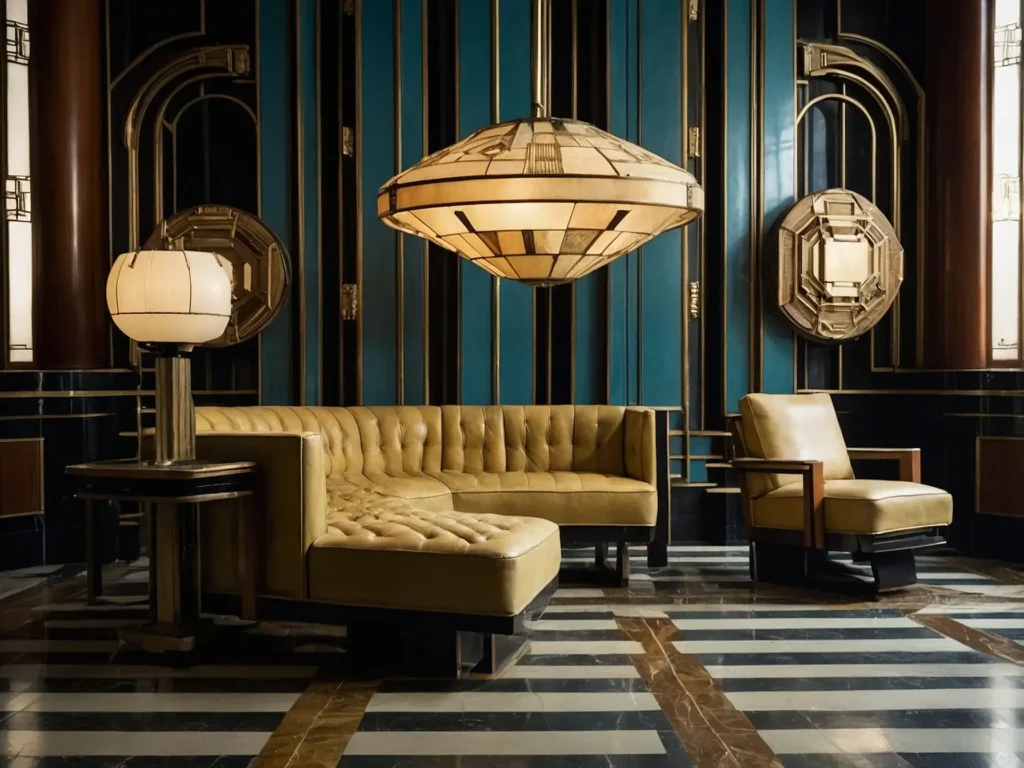
One of the most iconic features of Art Deco furniture is its strong geometric patterns and forms. Zigzags, sunbursts, trapezoids, circles, crisscrosses, and chevrons were common motifs.
These angular designs reflected the modern, machine-age aesthetic of the early 20th century. The patterns also mirrored the period’s architectural style, complementing iconic buildings’ strong lines and shapes.
Geometric patterns added visual interest and an avant-garde element to Art Deco pieces. The designs demonstrated technical mastery and precision craftsmanship since working with hard geometric lines was more challenging than fluid, natural forms.
Luxurious Materials
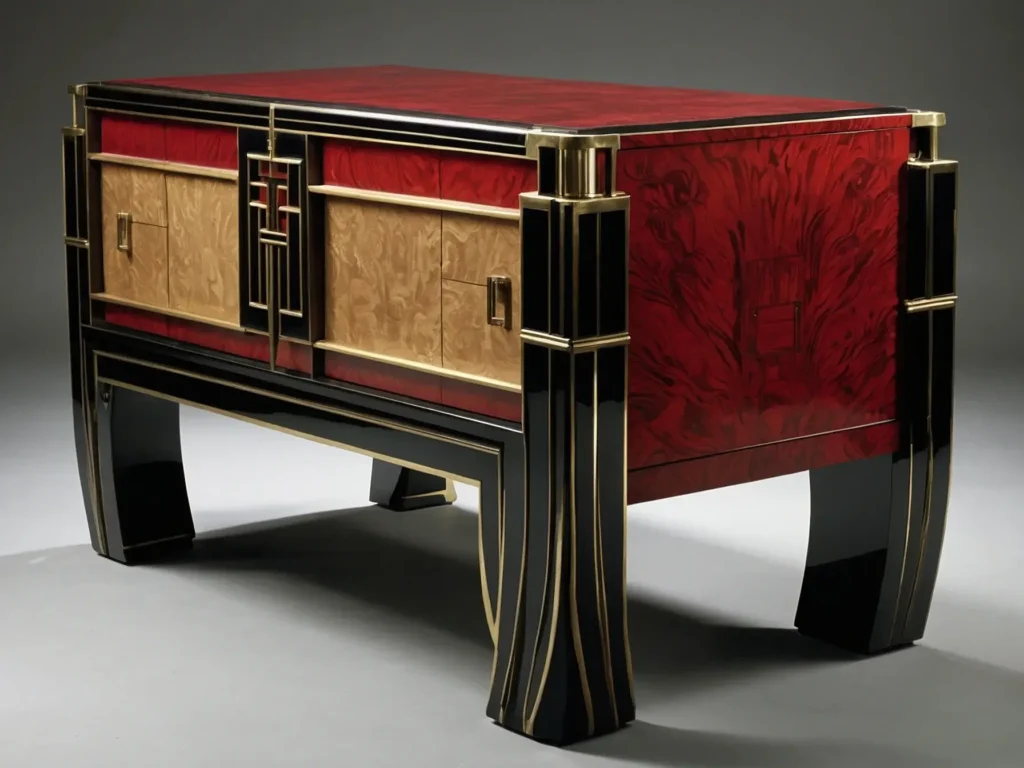
Art Deco furniture designers reveled in lavish materials that exuded exotic elegance. Some of the most popular choices included:
- Exotic Woods: Ebony, Macassar ebony, zebrawood, and rosewood added richness. Veneers, inlays, and lacquers created striking contrasts.
- Metals: Chrome, aluminum, stainless steel, and brass conveyed machine-age modernity.
- Lacquers: Glossy lacquered finishes emulated Asian craftsmanship techniques. Black and red lacquers were especially prized.
- Animal Materials: Sharkskin, parchment, ivory, and crocodile leather added luxurious texture.
- Glass: Clear, jadeite, and Bakelite glass incorporated sleek transparency.
These fine materials made each furniture piece special and elevated Art Deco’s glamorous aesthetic. The juxtaposition of different textures and colors allowed for creativity.
High-Quality Craftsmanship
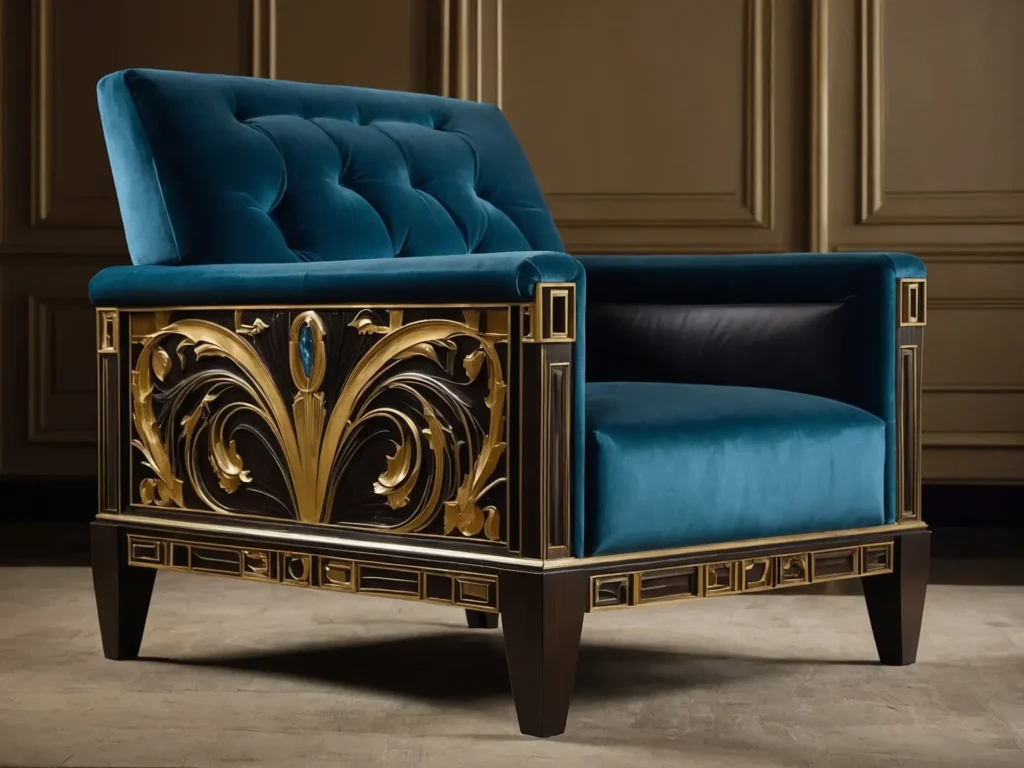
Every element of Art Deco furnishings demonstrated exceptional craftsmanship. The furniture incorporated hand-carved detailing, precise joinery, and impeccable finishing.
Designers placed great importance on technical mastery and sculptural quality in their works. The lavish materials were transformed into works of functional art through meticulous construction techniques like:
- Lacquering and hand-rubbed finishes
- Intricate marquetry inlaying
- Carving and hand-applied moldings
- Polishing, gilding, and patinating metal accents
- Upholstering with fine fabrics like silk, velvet, and leather
This attention to quality and detail ensured that every Art Deco piece would become a treasured heirloom.
Art Deco in Different Rooms
The glamour and elegance of Art Deco style made it a popular choice for interior furnishings. Here is an overview of how Art Deco made its mark on different living spaces:
Art Deco Furniture in the Bedroom
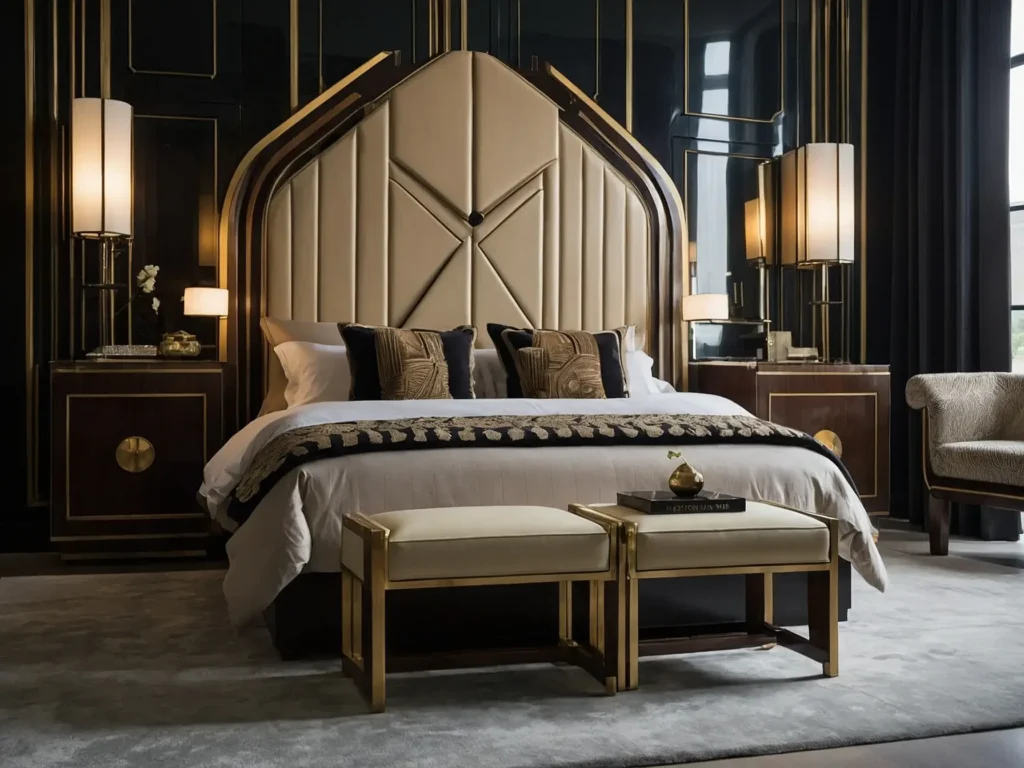
The bedroom provides an intimate setting to appreciate the nuances of Art Deco. Expect to see:
- Headboards: Sleek, low-profile headboards with geometric or sunburst patterns. Materials like lacquered wood, parchment, chrome, and leather.
- Nightstands: Compact nightstands with glossy finishes. Inlaid designs and chrome hardware.
- Benches: Curvaceous end-of-bed benches that add curves to offset rigid lines.
- Vanities: Elegant vanities and dressing tables with fold-out mirrors and hidden storage.
- Lighting: Sconces, pendants, and table lamps with glass and metal accents. Lighting was an important Art Deco focal point.
The bedroom provided a glamorous respite from busy everyday life.
Art Deco Furniture in the Kitchen
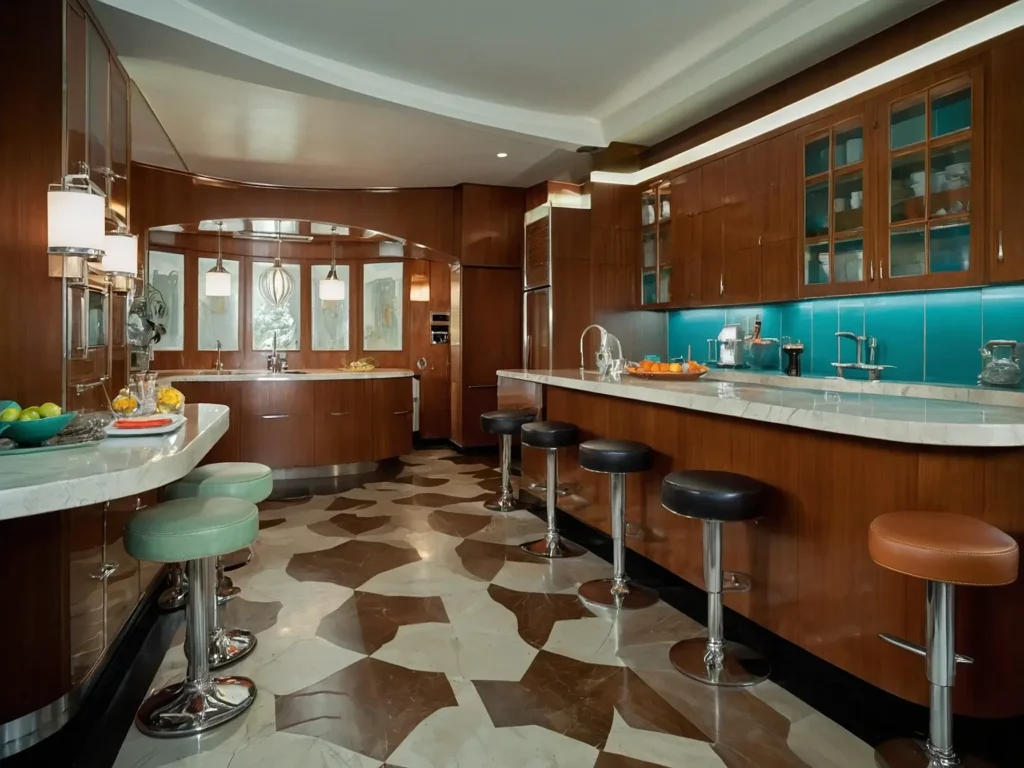
Art Deco created a bold, geometric statement in kitchens with:
- Cabinetry: Glossy cabinetry with exotic wood veneers or lacquered finishes. Chrome hardware added shine.
- Countertops: Rich materials like marble, granite, and concrete. Formica was also popular.
- Appliances: Mass-produced electric ovens and refrigerators conveyed modernity.
- Table and Chairs: Round pedestal tables with curvaceous chairs. Chrome tube frames added industrial edge.
- Pendants: Overhead pendant lighting with glass globes or shaded metal.
The contrast of natural wood tones, lacquered surfaces, and metal finishes gave kitchens striking visual style.
Art Deco Furniture in the Living Room
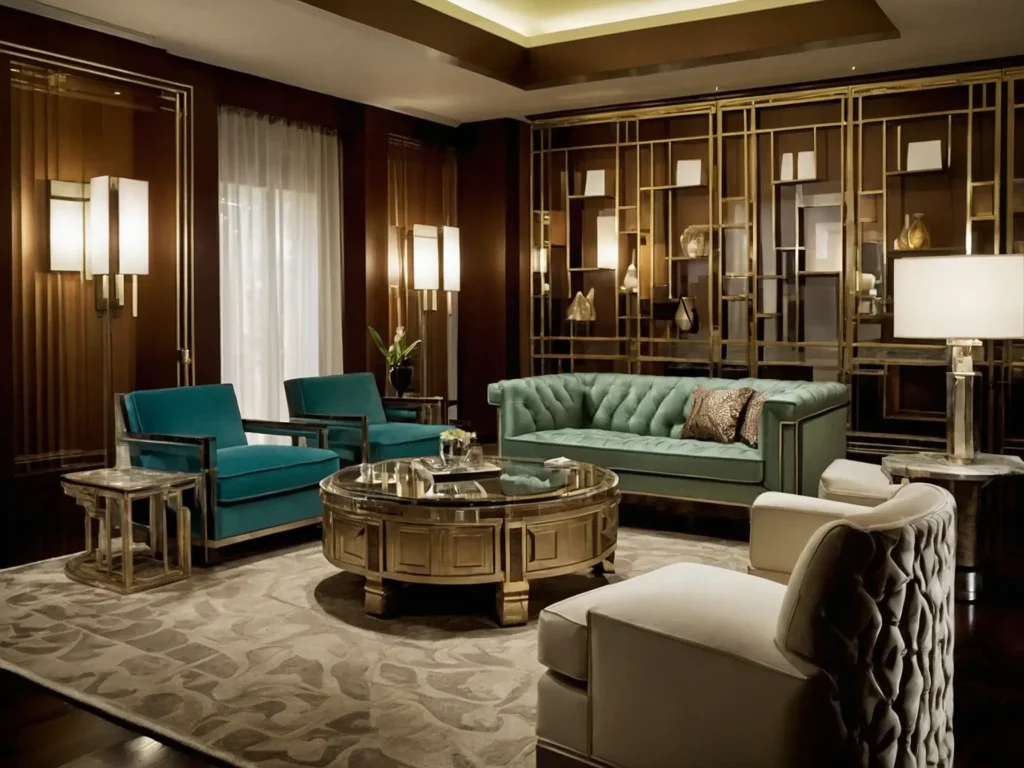
Art Deco living rooms demonstrated the style’s lavish hospitality for entertaining guests. Typical features included:
- Sofas: Low, streamlined sofas with rolled arms. Tufted upholstery and silk/velvet fabrics. Chrome or wood trim.
- Armchairs: Barrel chairs and curvaceous loungers with geometric patterns.
- Coffee Tables: Rectilinear tables with glass or lacquered surfaces. Inlaid designs and metal edging.
- Cabinets: Ornate cabinets for displaying cocktail ware or the radio.
- Lighting: Tiered floor lamps and sconces in creative shapes.
- Screens: Folding screens with bold graphics or nature motifs.
The living room was the backdrop for hosting lively cocktail parties, listening to jazz records, and gathering around the radio. Art Deco glamourized leisure time.
Art Deco vs. Other Styles
Art Deco shared some similarities but also differed distinctly from other popular design movements of the early 20th century. Here is a brief comparison of Art Deco versus other styles:
Art Nouveau vs. Art Deco
Art Nouveau flourished from the late 19th century into the early 1900s. It emphasized flowing, organic forms inspired by nature like flower motifs and insect wings.
In contrast, Art Deco embraced rigid geometry, machinery, and the technological advancements of the modern age. It diverged from Art Nouveau’s soft naturalism to convey an avant-garde spirit.
While Art Nouveau was more romantic and dreamy, Art Deco conveyed high energy and urban modernity. Art Nouveau focused on handcrafted quality, whereas Art Deco incorporated mass production.
Modernism vs. Art Deco
Modernism emerged in the late 19th century and continued through the mid-20th century. It embraced new technology, abstraction, and innovative materials.
Initially, Art Deco and Modernism overlapped in their goal to establish a thoroughly modern aesthetic. But over time, Modernism shifted focus to purely functional and minimal designs.
Famous Modernists like Le Corbusier promoted utilitarianism and rejected superfluous ornamentation. In contrast, Art Deco retained its emphasis on rich materials, fine craftsmanship, and aesthetics.
While Modernism leaned towards sparse, practical furnishings, Art Deco prioritized luxury, visual appeal, and the avant-garde.
Incorporating Art Deco Style
Art Deco makes a striking statement and elevates any space. Here are some tips for incorporating this timeless style into your home:
Furniture
Focus on one or two statement pieces with geometric patterns and luxurious finishes to serve as focal points. Opt for icons like a marble-top credenza, lacquered desk, or parchment floor lamp.
Fabrics
Upholster furniture in velvet, leather, or silk. Incorporate glass lampshades. Add pillows with Art Deco motifs.
Accessories
Display ceramic vases, ornamental boxes, or decorative glassware. Add a classic globe bar cart for entertaining.
Artwork
Hang graphic black and white prints. Seek works that align with the sleek, streamlined aesthetic.
Paint Colors
Use black, metallics, saturated jewel tones, or glossy lacquer finishes on walls. Let bold hues contrast with neutral furnishings.
Lighting
Make lighting a focal point by incorporating tiered floor lamps, sconces, and pendant lights with striking metal or glass materials.
Art Deco Furniture Collections
Top designers continue producing reproductions and renewed takes on iconic Art Deco pieces for contemporary interiors. Here are some notable collections:
- Eileen Gray Collections: Reissued designs by the famed modernist designer Eileen Gray, like her chic metal E-1027 table and glassBibendum chair.
- Cassina Martha Dining Table: A contemporary curved dining table inspired by an original 1930s metal Martha Dining Table.
- Kartell Masters Chair: Designed by Philippe Starck, this glossy polycarbonate armchair pays homage to the masters of 20th century design.
- A.Rudin Haven Bed: Channeling Ruhlmann, this sleek upholstered bed features exotic Ziricote wood.
- Boca do Lobo Metamorphosis Dining Table: A fresh take on Art Deco with a clear glass top and sculptural gold base.
Art Deco Interior Design in Modern Spaces
Art Deco style never faded from prominence, inspiring modern designers through the decades. Here are some examples of Art Deco elegantly translated into contemporary interiors:
Sofitel Mexico City Reforma Hotel
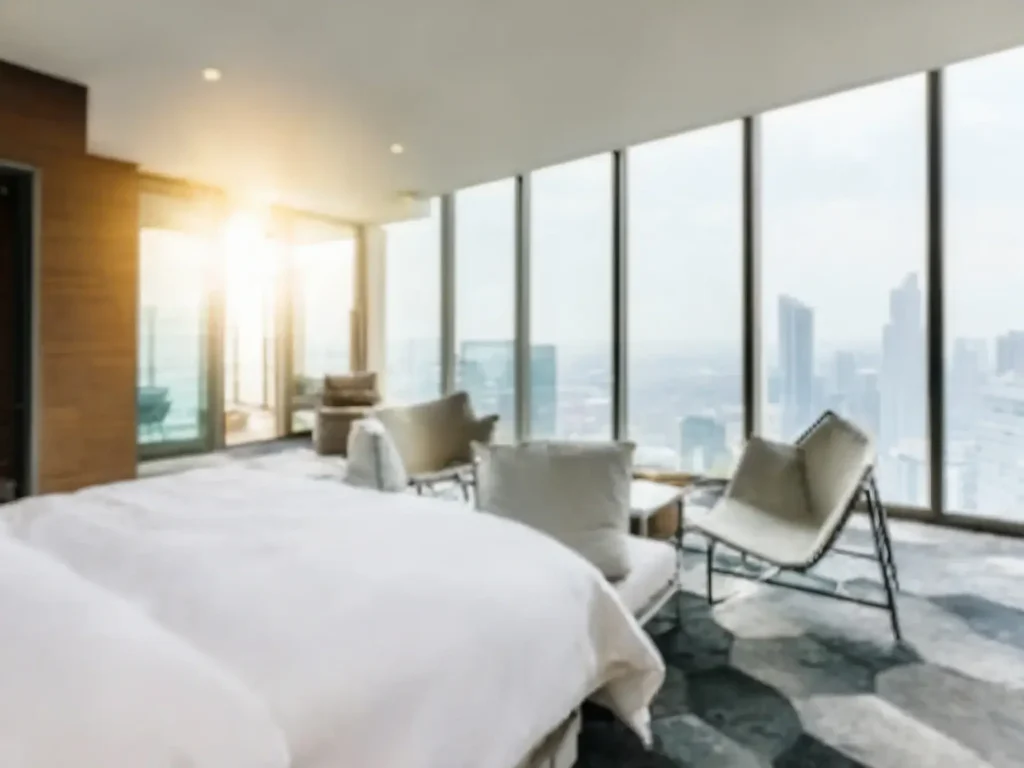
This luxury hotel masterfully blends Art Deco inspiration with modern aesthetics. The lobby features a geometric marble floor, ornate metalwork, and lacquered furnishings. Vibrant textures and colors breathe new life into classical motifs.
Izakaya Raku Restaurant in Los Angeles
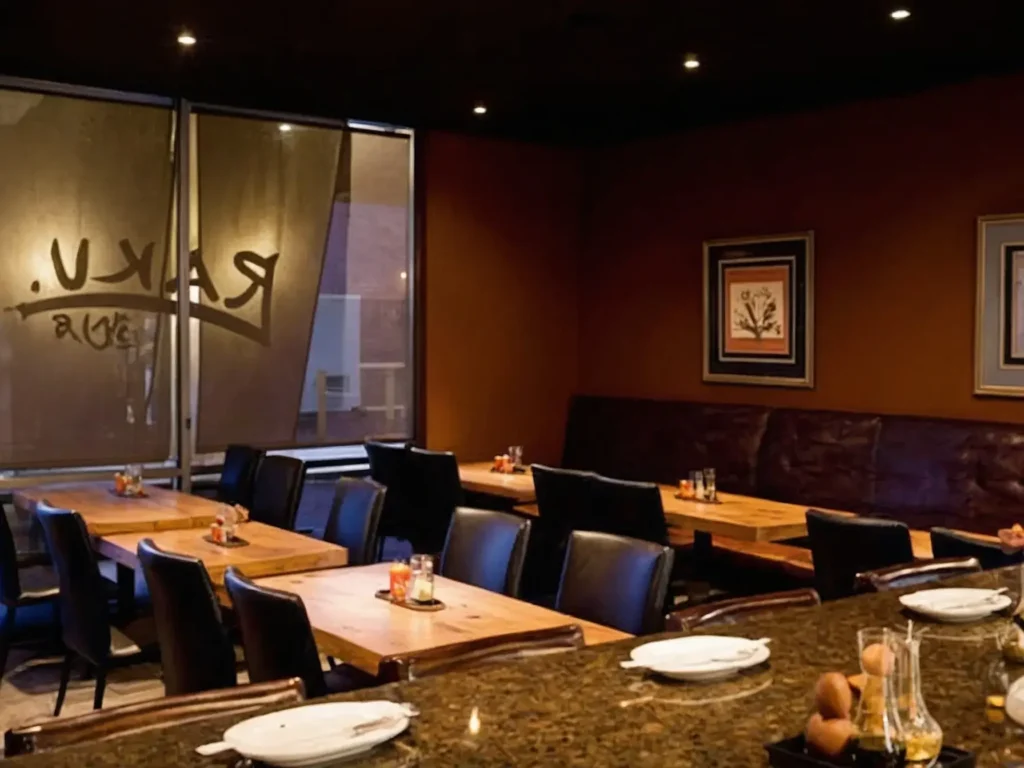
Dark woods, leather banquettes, and backlit onyx bar surfaces create moody glamour. Pops of ruby and emerald green add jewel-tone richness. The timeless, exotic vibe channels Tokyo bars of the 1930s.
The Beverly Hills Hotel’s Bungalows
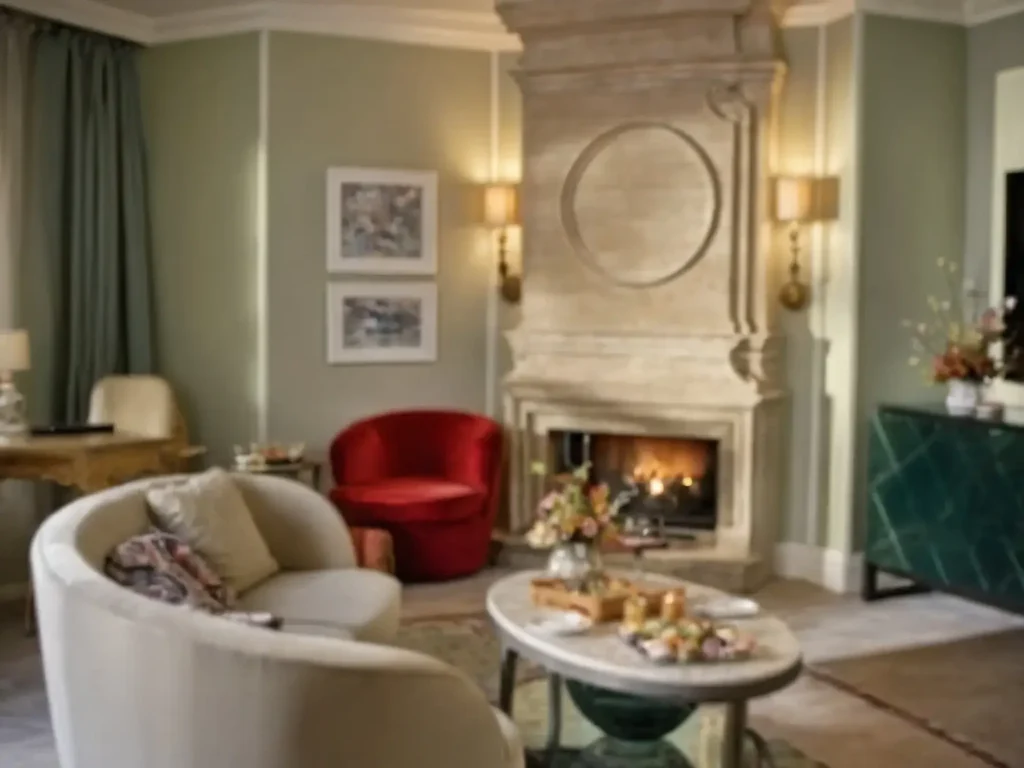
In their 2018 renovation, the iconic bungalows maintained signature Art Deco details like grasscloth walls and chrome finishes. Custom furnishings with sleek lines blend seamlessly with the original design.
The Langham Hotel, London
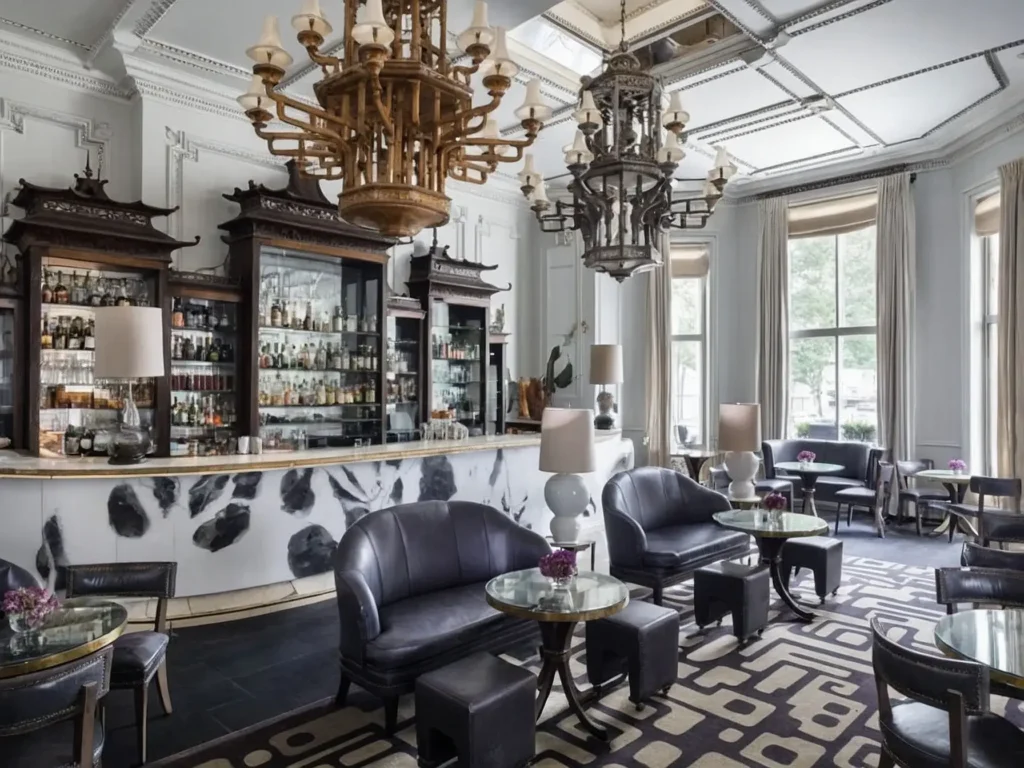
The Langham’s 2015 redesign celebrated its Art Deco roots. Lacquered screens divide the soaring two-story lobby while graphic prints and angular seating make the space contemporary.
Lee Stanton Interior Design
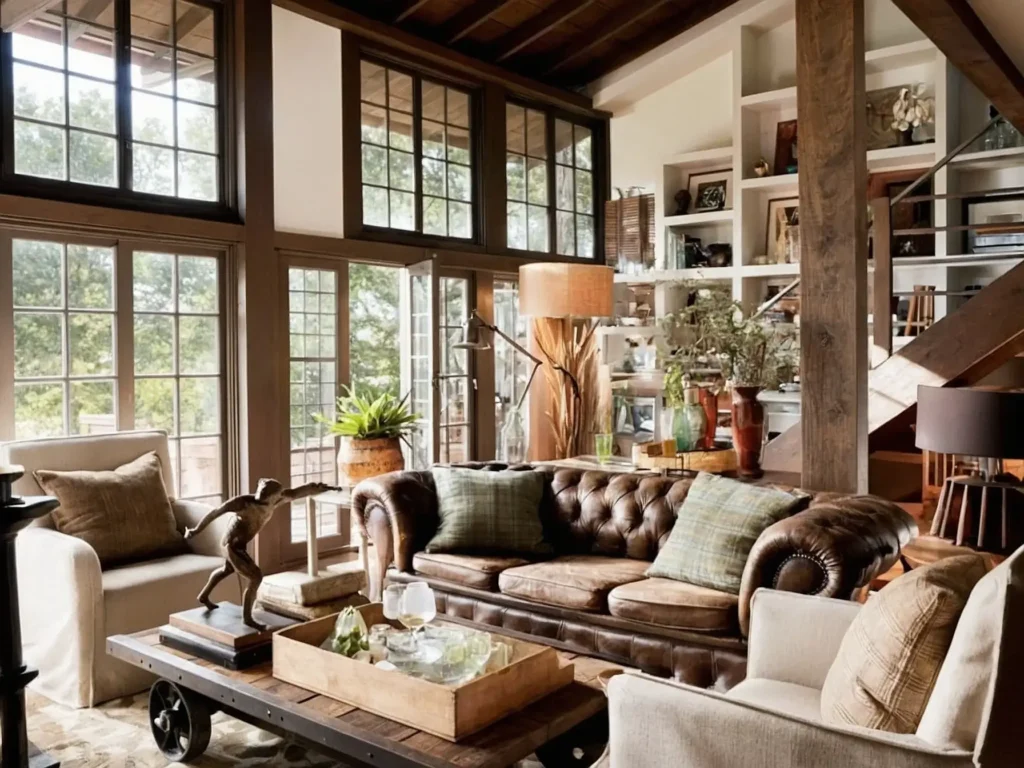
Lee Stanton’s residential designs feature bold black and white color schemes. Geometric mirrors, sunburst clocks, globe pendant lights, and glossy finishes add striking Art Deco flair.
Maintaining Art Deco Furniture
Caring for vintage Art Deco pieces requires some special considerations:
- Use soft cloths and gentle cleaners to avoid damaging delicate materials like lacquer, glass, and metal finishes.
- Protect pieces from direct sunlight exposure, which can cause fading.
- Be cautious in humid environments – excess moisture can warp wood furniture.
- Have an antique specialist repair structural damage like loose joints or scratched finishes. Don’t try DIY fixes.
- Consider having pieces professionally cleaned and refinished every few years to revive their luster.
- For upholstered seating, regularly vacuum and spot clean fabric.
Art Deco furnishings will last for generations with proper care, only becoming more beloved.
Art Deco Furniture – FAQs
What are the 4 main characteristics of Art Deco style?
The 4 main characteristics are:
- Geometric shapes and patterns
- Rich materials like lacquer, glass, and exotic woods
- Meticulous, high-quality craftsmanship
- Elegant, glamorous, and luxurious aesthetic
What makes Art Deco furniture distinctive?
Distinctive Art Deco features include symmetrical, streamlined shapes, geometric patterns, exotic veneers like ebony and Macassar ebony, inlaid motifs, glossy lacquer finishes, and finely crafted details that elevate each piece to functional art.
What are some iconic examples of Art Deco furniture?
Some iconic examples include:
- Ruhlmann’s rosewood vanity with ivory inlay
- Eileen Gray’s chic chrome and glass E-1027 table
- Frankl’s “Skyscraper” cabinet with Macassar ebony and nickel trim
- Deskey’s ebony and brushed aluminum “Speed” lounge chair
- Brandt’s intricately forged iron and brass radiator
What makes Art Deco furniture so valuable?
The high value stems from the quality of craftsmanship using rare, luxurious materials. Each piece required extensive hand finishing and detailing. The pieces were made in limited quantities, making authentic antiques rare. Art Deco’s enduring popularity as a classic style also drives up prices.
How can you incorporate Art Deco elements into a modern home?
Ways to incorporate Art Deco include:
- Hanging geometric graphic art
- Adding a sunburst mirror or clock
- Choosing furniture with glossy finishes and metal accents
- Upholstering in velvet or leather
- Displaying ceramic vases or glassware with Art Deco shapes
- Installing sconces or pendant lights
Conclusion
Art Deco furniture has maintained its status as an iconic interior design style for close to a century. The bold patterns, lavish materials, and exceptional craftsmanship of Art Deco pieces make them true works of art. This style introduced an avant-garde, luxury aesthetic that still feels fresh and contemporary.
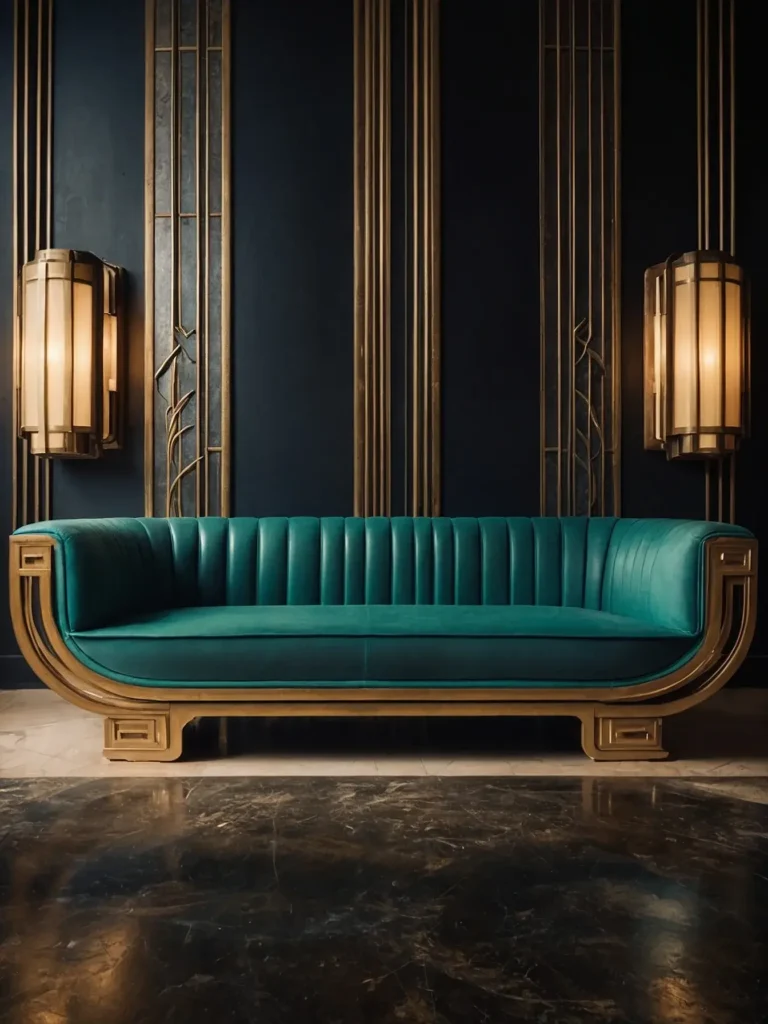
Art Deco endures as a sophisticated design language from its origins in 1920s Paris to its translation into modern spaces. With its streamlined forms, geometric motifs, and fine materials, Art Deco furniture will always retain its timeless glamour and appeal. Incorporating these classical statement pieces allows you to channel the essence of the Jazz Age while giving any room a polished, elegant touch.
